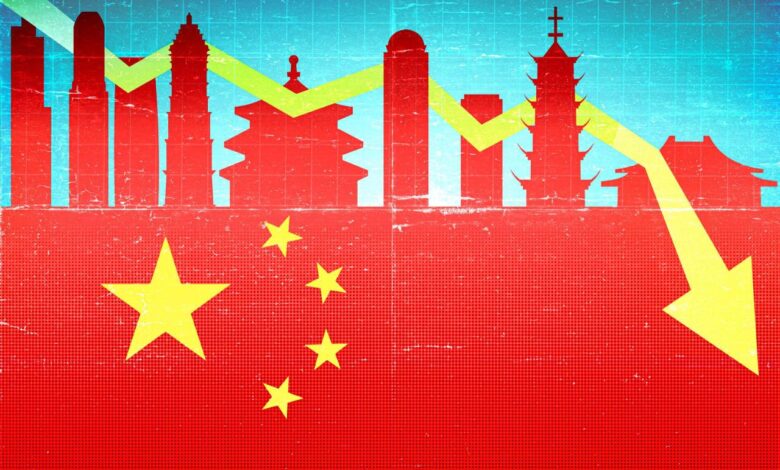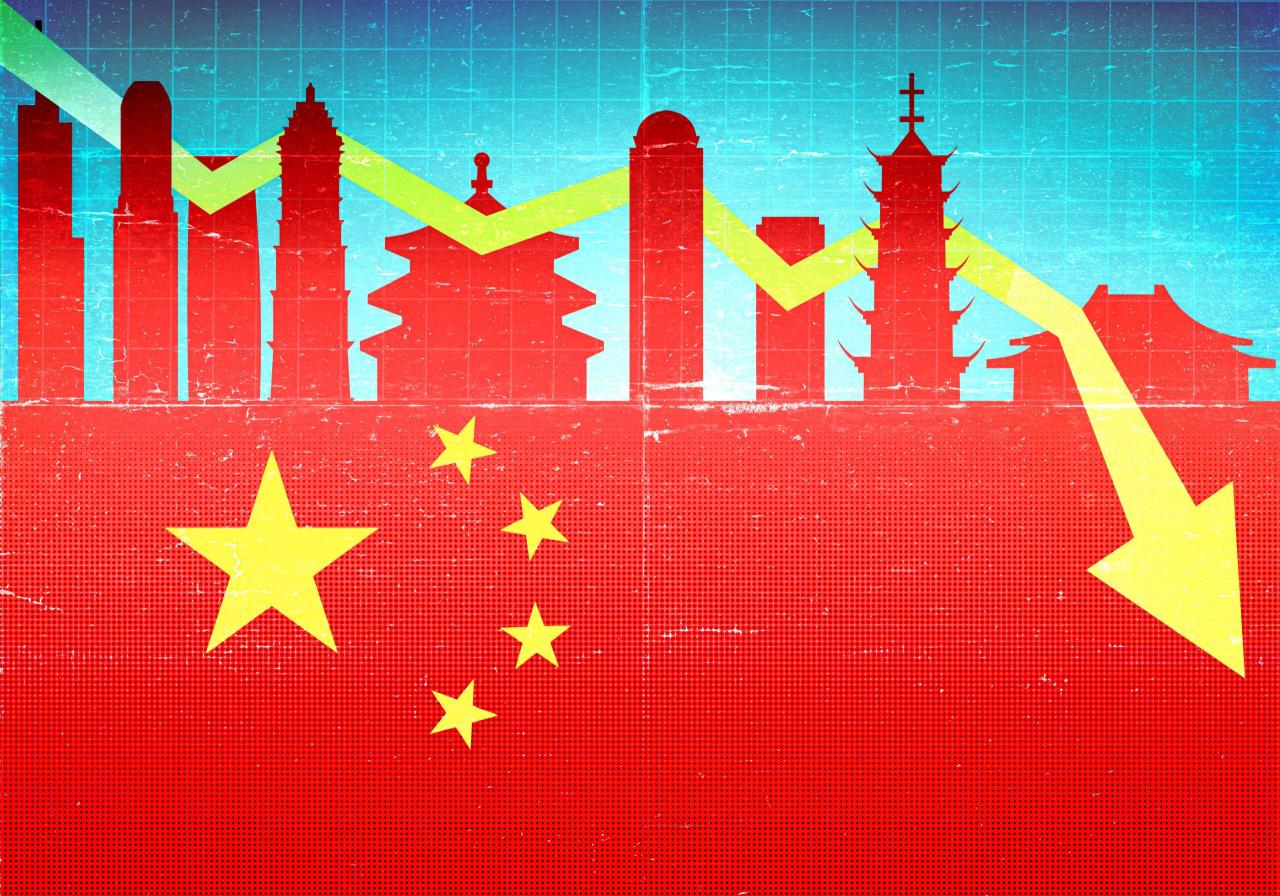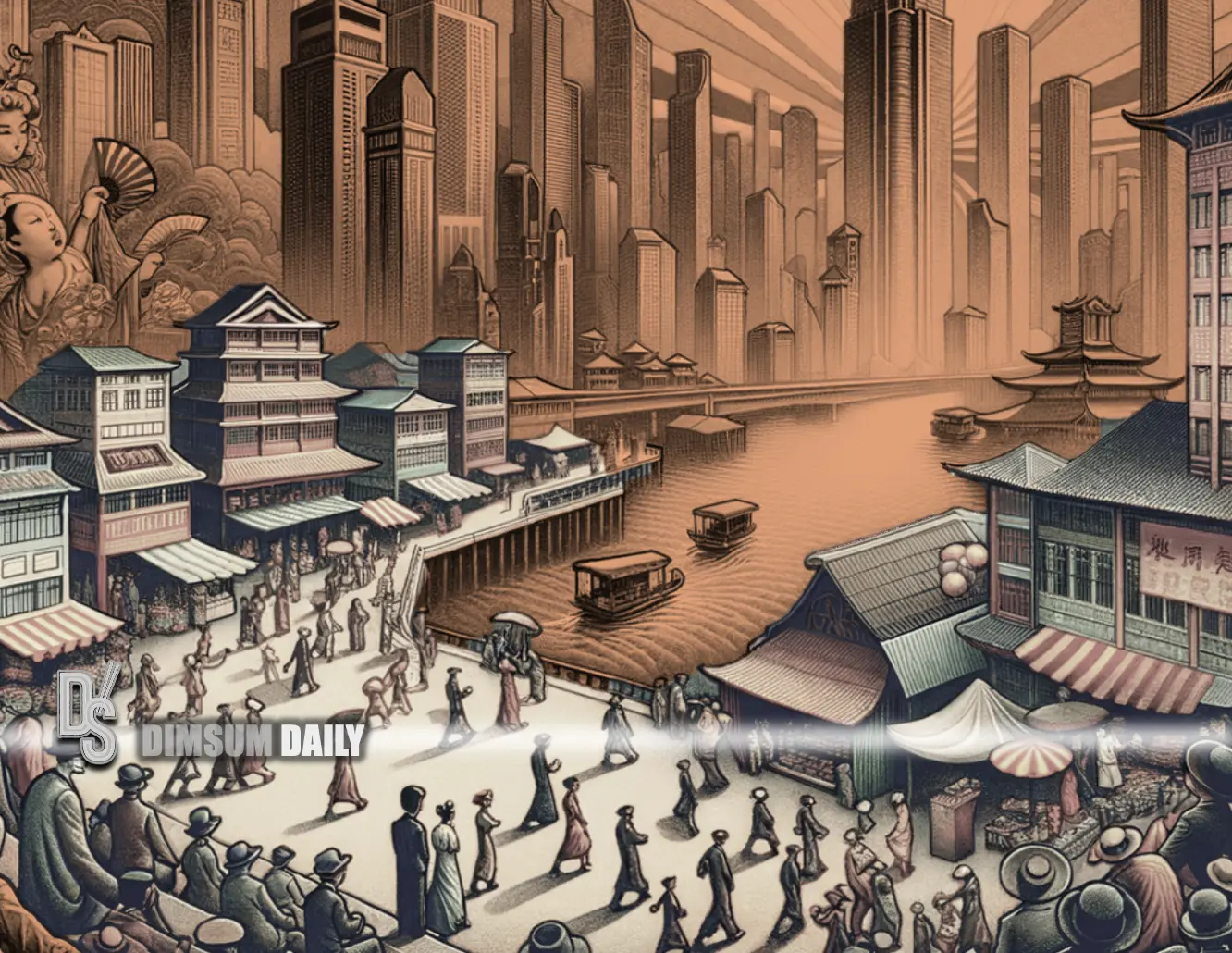
How China Thrives in a World of Turmoil
How China thrives in a world of turmoil is a question that’s captivated me lately. It’s a fascinating paradox: while global instability rages, China seems to navigate the choppy waters with a surprising degree of success. This isn’t just about economic growth; it’s about a complex interplay of economic strategies, geopolitical maneuvering, social control, technological advancement, and a remarkable ability to adapt to unforeseen circumstances.
We’ll dive deep into each of these areas to understand the factors contributing to China’s resilience.
From its impressive economic resilience in the face of global crises to its increasingly assertive geopolitical influence, China presents a compelling case study in navigating a turbulent world. We’ll explore the strategies behind its economic growth, examine its ambitious Belt and Road Initiative, and analyze its methods for maintaining social order and stability. We’ll also look at its technological leaps and its responses to global challenges like pandemics and climate change.
This isn’t about praising or condemning; it’s about understanding a significant global player and the factors driving its success.
Economic Resilience of China

China’s economic performance over the past few decades has been nothing short of remarkable, particularly its ability to weather significant global economic storms. This resilience stems from a multifaceted approach that blends strategic planning, government intervention, and a gradual shift towards a more diversified economy. While challenges remain, understanding the key elements of China’s economic strategy offers valuable insights into its continued growth.
China’s economic growth strategies during periods of global instability often involve a combination of fiscal and monetary policies aimed at stimulating domestic demand and supporting key industries. This proactive approach contrasts with some other nations that rely more heavily on market forces alone. A key element is the government’s willingness to invest heavily in infrastructure projects, creating jobs and boosting economic activity during downturns.
Furthermore, targeted support for specific sectors deemed crucial for national development, such as technology and renewable energy, helps to mitigate the impact of external shocks.
Government Intervention in Maintaining Economic Stability
The Chinese government plays a significant role in steering the economy. This includes setting industrial policies, managing currency exchange rates, and regulating investment flows. While this level of intervention can be criticized for limiting market freedoms, it has been instrumental in maintaining stability during times of global uncertainty. For example, during the 2008 global financial crisis, the Chinese government launched a massive stimulus package focused on infrastructure development, which helped cushion the blow and maintain relatively high growth rates compared to many other countries.
This contrasts with the more laissez-faire approach adopted by some Western economies, which experienced deeper recessions. The government’s ability to quickly mobilize resources and implement policies is a key factor in China’s economic resilience.
Comparison of China’s Economic Diversification with Other Major Economies
China’s economic diversification strategy has involved a shift from a reliance on manufacturing exports to a more balanced economy encompassing services, technology, and domestic consumption. This contrasts with some economies heavily reliant on specific industries, making them more vulnerable to global fluctuations. While the US and EU economies are also diversified, China’s deliberate and state-led diversification has been particularly effective in reducing its dependence on any single sector.
This strategic approach has allowed China to absorb shocks more effectively and maintain economic momentum even when global demand for manufactured goods weakens.
Examples of Successful Chinese Economic Policies During Times of Global Crisis
The 2008 global financial crisis provides a clear example of China’s effective crisis response. The massive stimulus package, focused on infrastructure investment, not only prevented a sharp contraction but also laid the groundwork for future growth. Furthermore, targeted support for key industries, such as renewable energy, has helped to position China as a global leader in these sectors.
China’s economic resilience, even amidst global instability, is fascinating. It’s a stark contrast to the intense political battles playing out elsewhere, like the one highlighted in this article about Trump’s rally in North Carolina: trump unloads on disloyal democratic house candidate at fiery rally ahead of pivotal north carolina special election. While the US grapples with internal divisions, China continues to focus on long-term strategic goals, showcasing a different approach to navigating turbulent times.
The government’s control over the financial sector also allowed for more effective management of capital flows and prevention of a banking crisis. These actions stand in contrast to the more reactive and less coordinated responses seen in some other nations.
China’s resilience in a turbulent global landscape is fascinating. Its ability to adapt and maintain growth, even amidst global uncertainty, is remarkable. Consider the scale of change needed elsewhere; reading about the challenges facing Volkswagen, as detailed in this insightful article, repairing vw requires huge upheavals , highlights how massive internal restructuring can be. This contrasts sharply with China’s more agile approach to navigating complex economic shifts.
Economic Performance Comparison (2013-2022), How china thrives in a world of turmoil
| Country | Average Annual GDP Growth (%) | Average Unemployment Rate (%) | Average Inflation (%) |
|---|---|---|---|
| China | 6.2 | 4.0 | 2.5 |
| United States | 2.1 | 4.7 | 2.0 |
| European Union | 1.5 | 7.2 | 1.8 |
| India | 7.0 | 6.5 | 5.0 |
Note: These figures represent averages and may not reflect year-to-year variations. Data sources: World Bank, IMF.
Geopolitical Influence and Strategy
China’s rise as a global power is inextricably linked to its sophisticated geopolitical strategy. While navigating a world increasingly characterized by conflict and uncertainty, China has pursued a multifaceted approach, balancing cooperation with competition to achieve its strategic objectives. This approach, while ambitious, presents both opportunities and challenges for the global order.China’s approach to international relations emphasizes non-interference in the internal affairs of other nations, a principle that contrasts sharply with the more interventionist stances of some Western powers.
This policy, coupled with significant economic leverage, allows China to cultivate relationships with a wide range of countries, regardless of their political systems. However, this non-interference policy has also been criticized for allowing authoritarian regimes to operate unchecked.
The Belt and Road Initiative and Global Trade
The Belt and Road Initiative (BRI), a massive infrastructure development project spanning across Asia, Africa, and Europe, is a cornerstone of China’s geopolitical strategy. The BRI aims to enhance connectivity and facilitate trade through the construction of ports, railways, roads, and other infrastructure projects. Its impact on global trade is substantial, creating new trade routes and boosting economic activity in participating countries.
However, concerns remain about the initiative’s debt sustainability for some recipient nations, and its potential to increase China’s geopolitical influence in strategically important regions. For example, the construction of ports in Sri Lanka and Djibouti, while boosting local economies, has also raised concerns about potential Chinese military access to these strategic locations.
Key Alliances and Partnerships
China’s geopolitical influence is significantly bolstered by its strategic alliances and partnerships. These include strong ties with countries in the Shanghai Cooperation Organisation (SCO), a Eurasian political, economic, and security alliance; and the BRICS group (Brazil, Russia, India, China, and South Africa), which represents a significant bloc of emerging economies. These partnerships provide China with political support on international forums and access to vital resources and markets.
China’s resilience in turbulent times is a fascinating study. Its economic strength seems to even benefit from global instability, a point highlighted by considering the broader geopolitical landscape; check out this insightful analysis buffet analysis buffet 25 urgent things you need to know about spygate epstein china financial collapse mass shootings and civil war for more context.
Understanding these global trends helps explain how China continues to thrive amidst chaos.
Further, China’s growing economic ties with numerous African nations are also a key component of its global strategy. This multifaceted network of alliances allows China to counterbalance the influence of established Western powers.
Examples of China’s Diplomatic Efforts
China’s diplomatic efforts to navigate international tensions are often characterized by a cautious approach that prioritizes stability and mutual benefit. For instance, China’s engagement in mediating conflicts in various regions, such as its role in the Iran nuclear deal negotiations, demonstrates its willingness to play a constructive role in international affairs. However, China’s stance on issues such as Taiwan and the South China Sea remains a significant source of tension with other countries.
China’s diplomatic efforts are often seen as a way to secure its economic interests while promoting its own vision of a multipolar world order. For example, China’s increased engagement with countries in Latin America reflects a desire to diversify its economic partnerships and reduce reliance on traditional Western markets.
Advantages and Disadvantages of China’s Geopolitical Strategy
China’s current geopolitical strategy presents a complex picture with both significant advantages and drawbacks.
- Advantages: Increased global influence, economic growth through the BRI, strengthened international partnerships, successful navigation of complex geopolitical landscapes.
- Disadvantages: Concerns over debt sustainability in BRI projects, accusations of authoritarianism and human rights abuses, potential for increased geopolitical tensions due to assertive foreign policy in some areas, challenges in managing its relationships with countries holding differing political ideologies.
Technological Advancement and Innovation: How China Thrives In A World Of Turmoil

China’s remarkable economic rise is inextricably linked to its commitment to technological advancement and innovation. This commitment isn’t just about catching up; it’s about establishing a leading position in key sectors, reshaping global technological landscapes, and securing its future prosperity. This drive is fueled by massive investments, strategic government policies, and a rapidly growing pool of skilled researchers and engineers.China’s investments in research and development (R&D) across various sectors are staggering.
The country has consistently increased its R&D spending, surpassing many developed nations in sheer volume. This investment spans diverse fields, including artificial intelligence (AI), renewable energy, biotechnology, aerospace, and telecommunications. This multi-pronged approach ensures that China isn’t just focusing on a few specific technologies but is building a robust and diversified technological foundation.
Chinese Technological Breakthroughs and Global Impact
Several notable Chinese technological breakthroughs have made significant global impacts. For example, China’s advancements in high-speed rail technology have resulted in extensive and efficient high-speed rail networks domestically, and the technology is now being exported and adopted internationally. Similarly, China’s progress in renewable energy technologies, particularly solar panels and wind turbines, has made it a major player in the global green energy market, offering cost-competitive solutions to other countries.
In the realm of 5G technology, China’s Huawei has played a significant role in the development and deployment of 5G infrastructure globally, despite facing geopolitical challenges. These examples highlight China’s ability to not only innovate but also commercialize its technological advancements on a global scale.
Government Support for Technological Innovation
The Chinese government plays a crucial role in fostering technological innovation through various policy initiatives. These include substantial funding for R&D, the establishment of national research programs focused on key technological areas, and the creation of favorable regulatory environments for technology companies. Government-led initiatives often focus on strategic national goals, driving innovation in areas deemed crucial for economic growth and national security.
This includes support for startups and entrepreneurs through incubators and venture capital funding, creating a vibrant ecosystem for technological development. Furthermore, the government’s focus on intellectual property rights protection has improved over time, though challenges remain.
Comparison of China’s Technological Capabilities with Other Leading Nations
While China has made impressive strides, comparing its technological capabilities with other leading nations requires a nuanced approach. In some areas, such as high-speed rail and renewable energy technologies, China holds a clear global leadership position. In others, such as semiconductor manufacturing and certain aspects of AI, it is still catching up to the United States and other advanced economies.
However, China’s rapid progress and substantial investment suggest a continued narrowing of the gap in many key technological domains. The competition is intense, but China’s persistent efforts are undeniable.
Technological Advancement and Economic Growth in China
 The image depicts a high-speed train speeding through a modern cityscape, juxtaposed with a solar farm stretching across a vast landscape. This visual representation encapsulates the synergy between technological advancement and economic growth in China. The high-speed rail signifies China’s advancements in infrastructure and transportation technologies, boosting connectivity and facilitating economic activity. The solar farm symbolizes the nation’s commitment to renewable energy, driving both economic development and environmental sustainability. The combined image illustrates how technological innovation fuels infrastructure development, enhances industrial efficiency, and creates new economic opportunities, ultimately contributing to China’s remarkable economic growth. This symbiotic relationship is crucial to China’s ongoing development strategy.
The image depicts a high-speed train speeding through a modern cityscape, juxtaposed with a solar farm stretching across a vast landscape. This visual representation encapsulates the synergy between technological advancement and economic growth in China. The high-speed rail signifies China’s advancements in infrastructure and transportation technologies, boosting connectivity and facilitating economic activity. The solar farm symbolizes the nation’s commitment to renewable energy, driving both economic development and environmental sustainability. The combined image illustrates how technological innovation fuels infrastructure development, enhances industrial efficiency, and creates new economic opportunities, ultimately contributing to China’s remarkable economic growth. This symbiotic relationship is crucial to China’s ongoing development strategy.
Adaptability and Response to Global Challenges

China’s remarkable economic growth and global influence haven’t been achieved in a vacuum. The nation has consistently demonstrated a capacity to adapt and respond effectively to major global challenges, showcasing a resilience that sets it apart in an increasingly volatile world. This adaptability stems from a complex interplay of factors, including its centralized governance structure, its emphasis on long-term planning, and its ability to mobilize resources on a massive scale.
However, evaluating China’s responses requires a nuanced understanding of both its successes and limitations.China’s response to global challenges is characterized by a blend of top-down planning and bottom-up implementation. This approach allows for rapid mobilization of resources during crises but can also lead to inefficiencies and a lack of transparency. While the speed of response is often impressive, the long-term sustainability and equity of the solutions implemented require further scrutiny.
A comparison with other nations reveals that while many countries struggle with similar challenges, China’s scale and centralized system provide a unique context for its responses.
China’s Pandemic Response
The COVID-19 pandemic provided a stark test of China’s adaptability. Initial efforts focused on strict lockdowns in Wuhan and other affected areas, a strategy that, while controversial in terms of individual liberties, significantly slowed the virus’s spread within the country. Subsequent policy shifts included the development and deployment of domestically produced vaccines, a massive expansion of testing capabilities, and the implementation of sophisticated contact tracing systems.
These measures, while effective in containing the virus domestically, also faced criticism regarding their impact on the economy and human rights. The pandemic also highlighted the importance of international cooperation in addressing global health crises, an area where China’s role remains a subject of ongoing debate.
Adapting to Climate Change
China is acutely aware of the threats posed by climate change, particularly given its vulnerability to extreme weather events and its significant contribution to global greenhouse gas emissions. The country’s response involves a multi-pronged approach, including substantial investments in renewable energy sources such as solar and wind power, the development of carbon capture technologies, and the implementation of ambitious national targets for emissions reduction.
However, China’s continued reliance on coal for energy generation remains a significant challenge. The balancing act between economic growth and environmental sustainability continues to be a defining feature of China’s climate policy. Furthermore, international collaboration on climate action is seen as crucial, with China playing an increasingly important role in global climate negotiations.
Key Factors Contributing to China’s Adaptability
Several key factors contribute to China’s capacity to adapt to global challenges. The centralized nature of its government allows for rapid decision-making and the efficient allocation of resources. The country’s emphasis on long-term planning enables it to anticipate and prepare for potential future challenges. Furthermore, its large domestic market and its growing technological capabilities provide a degree of resilience to external shocks.
However, challenges remain, including the need for greater transparency and accountability in policymaking, and the potential for overreliance on centralized control.
Comparison with Other Nations
Comparing China’s adaptability with that of other nations requires acknowledging the vast differences in political systems, economic structures, and societal contexts. While some nations, such as South Korea and Singapore, have also demonstrated remarkable adaptability, China’s scale and centralized control provide a unique approach to crisis management. The effectiveness of these different approaches varies depending on the specific challenge faced.
While China’s response to the pandemic was swift and effective domestically, other nations adopted different strategies with varying degrees of success. The ongoing climate crisis provides another arena for comparing national approaches to adaptation, revealing a range of responses reflecting different priorities and capabilities.
China’s Response to the 2008 Global Financial Crisis: A Timeline
2008: The global financial crisis hits, impacting international trade and investment.
November 2008: China announces a 4 trillion yuan (approximately US$586 billion at the time) stimulus package focused on infrastructure development, social welfare programs, and technological upgrades.
2009-2010: The stimulus package boosts domestic demand and helps to mitigate the impact of the global recession on China’s economy. However, concerns arise regarding potential overcapacity and unsustainable debt levels.
Post-2010: China gradually shifts its focus towards more sustainable and balanced economic growth, implementing measures to address debt risks and promote innovation.
So, how
-does* China thrive in a world of turmoil? The answer, as we’ve explored, isn’t simple. It’s a multifaceted story woven from threads of economic pragmatism, strategic geopolitical maneuvering, robust social control, significant technological investment, and a capacity for adaptation. While some might criticize certain aspects of China’s approach, its success in navigating recent global challenges is undeniable. Understanding its strategies offers valuable insights into the complexities of navigating a rapidly changing world, regardless of your perspective on the Chinese government.
It’s a story that deserves continued observation and analysis.





